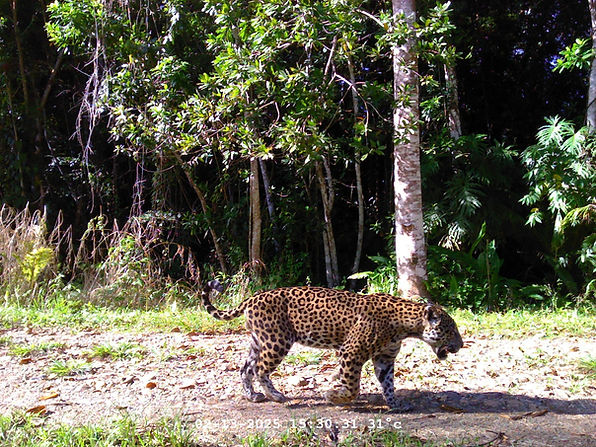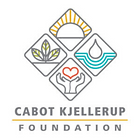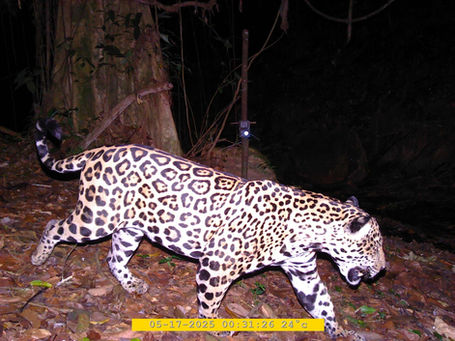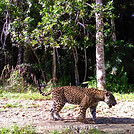
Monitoring Mammal Communities Across a Forest-to-Farm Landscape
Monitoring Mammals at Silk Grass Farms and Wildlife Preserve
Project Summary
Silk Grass Farms and the Silk Grass Wildlife Preserve (SGWP) form part of the greater Maya Mountain Massif and are bordered by three key protected areas: Cockscomb Basin Wildlife Sanctuary, Sittee River Forest Reserve, and Mayflower Bocawina National Park. This landscape supports a rich diversity of mammals, including the iconic jaguar (Panthera onca); ocelot (Leopardus pardalis); puma (Puma concolor); the national animal of Belize, the Baird’s tapir (Tapirus bairdii); coati (Nasua narica); and many other species of ecological importance.
In response to conservation and land-use challenges in this working landscape, UB-ERI and Panthera, in partnership with Silk Grass Farms, are implementing a large-scale camera trap monitoring initiative. This project aims to:
1. Assess the overall health and diversity of the mammalian community within SGWP;
2. Inform evidence-based, strategic management of the landscape by providing high-quality ecological data to support coexistence between agriculture and wildlife; and
3. Build a photo-based inventory of individual jaguars to help identify and track cats potentially involved in human-wildlife conflict in surrounding communities.
Methodological Approach
To monitor mammal communities across the Silk Grass landscape, we will deploy double-sided camera stations—two camera traps positioned at each coordinate, one on either side of the trail—to capture both flanks of spotted cats such as jaguars and ocelots. Cameras will be mounted on trees or posts approximately 25–30 cm (1 ft) above ground and 0.5–1 m from the trail or road edge, ensuring optimal detection of medium and small-bodied mammals and ground-dwelling birds.
Camera stations will be spaced at intervals of less than 3 km (average 2.3 km), a configuration proven effective for jaguar monitoring. Cameras will operate continuously (24 hours/day), and field teams will service stations every 4 to 6 weeks to replace batteries, download data, and remove any vegetation obstructing the view.
All imagery will be processed and entered into Panthera’s IDS database, where jaguar individuals will be identified using their unique coat patterns. These will be cross-referenced with Panthera’s existing long-term records. The resulting data will contribute to annual reports that estimate local jaguar abundance and spatial distribution, enabling comparisons with nearby protected areas such as Cockscomb Basin Wildlife Sanctuary, Manatee Forest Reserve, and Chiquibul National Park.
Project Impact
This project aims to establish a baseline inventory of medium and large mammal species, along with identifiable bird species, using camera trap surveys across Silk Grass Farms and the Silk Grass Wildlife Preserve (SGWP). It will assess the population status of jaguars, ocelots, and margays, and estimate the relative abundance of terrestrial mammals. The study will compare mammal community composition between broadleaf forest and agricultural areas within the Silk Grass landscape and the wider Cockscomb–Sittee River corridor. Additionally, it will track jaguar movements and evaluate individual exchange between Silk Grass Farms, SGWP, and the adjacent Cockscomb Basin Wildlife Sanctuary, across the Sittee River.
Partners and Funders










